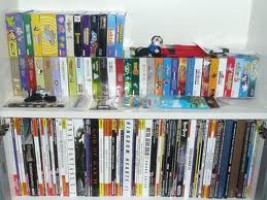Infinite. The definition of this word is one we all know, but how can we possibly understand it. Nothing we’ve ever known or experienced in our lives has been never-ending. Until now…
Behold…the Moog Guitar. Moog? Guitar?
Known for their massively influential (and sometimes monolithic) synthesizers, Moog have been at the forefront of sonic exploration for decades. In addition to creating the most imitated and desirable monophonic synthesizer of all time, the Minimoog, one of Bob Moog’s greatest achievements was the creation of the Ladder Filter. You’ll see why this is important in a minute but for more info on what this nifty circuit does read this. Needless to say, when Moog announced plans for a guitar, many people were interested.
That was in 2008. Now, four years later, not much more is known about this elusive instrument and they’re rare (if not impossible) to find in most music shops. Most musicians I talk with aren’t even aware of it’s existence, let alone know exactly how it’s capable of being used. With that, we begin our tour of this other-worldly instrument.
By appearance alone, there’s not much to indicate that this instrument possesses any magical powers beyond those of a standard electric guitar. A ‘super Strat’ style body dressed up nicely with a flamed maple top on a swamp ash body, the only thing that strikes you as odd are the cluster of knobs and switches that dominate the lower curve of the body. Two pickups, set neck construction, a Fender-style dive-only tremolo bridge, locking tuning machines and a clean, inlay-free (save the cryptic, circular logo at the 12th fret) rosewood fretboard…all features found on a number of guitars today. Then the paths diverge; where you would expect to find a standard 1/4″ output jack is an XLR output, a connection commonly found on microphones, not guitars. Curiouser and curiouser. Following this cable leads to a junction with an expression pedal and on the opposite side of the pedal is the 1/4″ output you were expecting. From here you feed out to the amplifier and things are starting to feel sane again. Plugged in, you turn the amp off of Standby.
At first listen, it sounds like a standard electric guitar. The proprietary pickups are akin to a fat single coil, or perhaps a P-90. Not the most powerful or clear pickups, but they hold a decent amount of harmonic content. Running through the pickup selector yields some interesting tonal variations; neck, in phase, out of phase and bridge only. The 5th position in the selector engages the piezo pickups housed in the bridge saddles; percussive, chimey and bright, the sound brings to mind an amplified acoustic guitar. A control on the guitar allows for a continuous blend of the piezo and magnetic pickups letting you mix the clarity of the piezos with the warmth of the magnetic pickups.
But below the pickup selector is a second three-way switch. You didn’t really notice it yet because it’s function is coupled with the gold knob below the master volume knob and it’s turned down. Turn it all the way up and suddenly the guitar is crackling with electricity; it comes alive! The strings begin vibrating…on their own. The entire guitar is steadily vibrating but you haven’t even touched pick or fingers to string. What separates this guitar from a standard electric suddenly becomes clear even though you aren’t quite sure what is happening. Those proprietary pickups have the ability of controlling a magnetic field that envelops and dictates the amount and type or vibration of the strings. That gold knob controls the intensity of the magnetic field and the three-way controls the mode of control.
That first mode is Full Sustain, meaning that all six strings are being simultaneously driven by the magnetic fields and vibrate as if being played by some unseen force. You hit a chord, it swells to an almost overbearing volume and the feeling is completely intoxicating. As you hold the chord, it sustains and morphs, naturally, shifting overtones and harmonics. This can be controlled with the expression pedal; heel to toe, the control moves from the bridge to neck pickup creating a pointed, aggressive harmonic crown that blends into a deep, airy and open halo centered around the notes being played. Polyphonic sustain that is completely natural (i.e. the strings are physically being moved without end) and yet feels anything but. Adjusting the amount of sustain allows for chords that have a volume pedal swell effect. Using the tremolo bar to quickly dive before each chord change supplies enough vibration for amplification and the breath-like pulse from chord to chord leaves you baffled. Techniques you had never even considered before allow you passage to harmonic destinations previously unknown.
The second position of the three-way is Controlled Sustain. Not only are these pickups powerful enough to physically move the strings, but they’re intelligent enough to simultaneously mute strings that aren’t being played. Infinite legato is literally at your fingertips and single-note runs take on a pedal steel feel, swelling into each note before growing to epic proportions only to dissolve gracefully once the next note is played and the cycle begins again. With a nice delay effect unit you can manifest sounds and progressions that bring to mind the majestic ballad of a migrating whale or a spacious, repeated message to the heavens…a cosmic psalm.
You slide the three-way to the final position and something is drastically different. All the power you held beneath your fingers is gone. Not only has your new found power of sustain vanished, but it’s been reversed. This is Mute Mode and it’s Biblical; where before the guitar giveth sustain it now taketh away. The same forces that kept the strings vibrating in the previous two modes now are used to stop any string played from vibrating for more than a few seconds. The sound…synthesizer? No. Mandolin? Not really. Banjo? Kinda. Sitar? Sure. More than the sound, the feeling is incredible. If you pay attention, you can feel the string vibration die, again, as if guided by a supernatural force. Finger-picked arpeggios and quick chord comping play to this mode’s strengths.
But that’s just half the story. Dial back the gold knob controlling the magnetic mayhem and there’s still that 3-pole switch. It’s been in the bottom position, where it functions like a regular tone knob on a guitar, the whole time but you flick it up to the middle. Even before you play you hear something like a hiss. Rocking the expression pedal and you hear this hiss build until it’s gone.
What you were hearing is the built-in Ladder Filter sweeping across it’s frequency range. Yes, the same low pass filter made famous in the synthesizers of the 70s is an integral part of this guitar. In this mode, the Articulated Filter mode, the envelope cutoff frequency of the filter is set by the position of the expression pedal and triggered by the on-board envelope. The filter envelope is directly proportional to the signal output of the guitar meaning that the harder you pick, the further the filter “opens”. The result is a low-pass, wah-like tonal accent that brings to mind the Mutron-inflected lead tones of Jerry Garcia or Frank Zappa.
The last postion of the 3-pole switch is a manual Ladder Filter mode where the expression pedal controls the sweep of the cutoff. It operates even more like a wah, but sounds like something far more futuristic and covers a much wider range of frequencies. Where a wah is a moving bandpass filter (meaning that it accents a set range of frequencies ‘up and down’ the spectrum) the low pass filter, at it’s heel setting, allows only low frequencies through. As you rock the pedal forward, more frequencies are allowed through until, at its fullest, the full spectrum of frequencies coming out of the guitar can be heard. It’s a sound that has much more sonic content to it and, as a result, feels much more alive and far less honky.
After all this, you don’t really know how to explain what just happened. Your mind accelerates as you create mental notes about what you now may be capable of…the promise of the unknown. You’re not sure what to do with this guitar but you’re thrilled by the possibilities.








